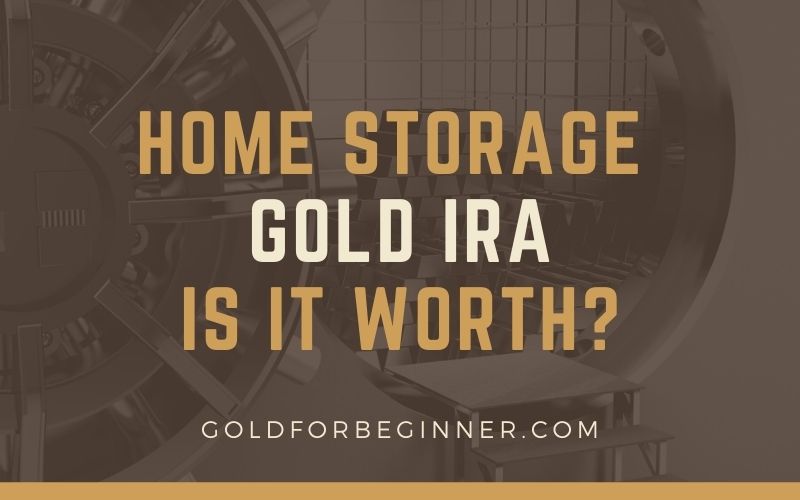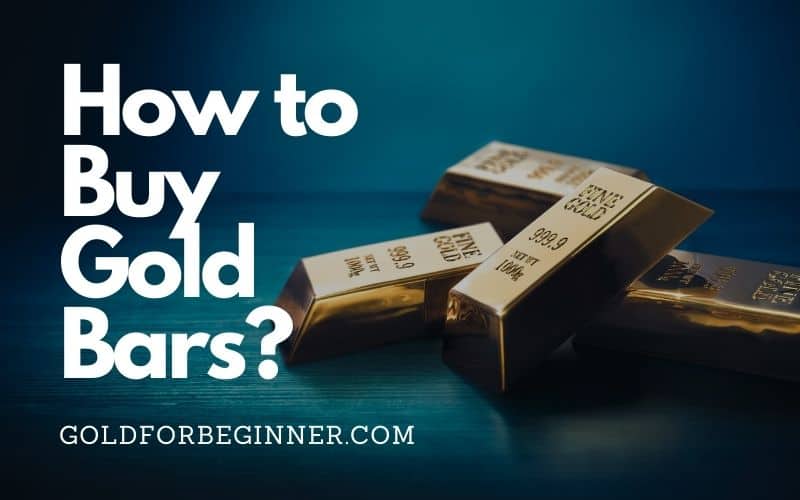The appeal of gold as a store of value is almost as old as mankind itself. Throughout human history, gold is one of the precious metals that managed to maintain the charm undiminished. In fact, it has only grown more. The allure of gold is mostly because of its appearance, malleability, and scarcity.
In the past currencies used to be backed by gold. This system known as the gold standard was abandoned during WWII. However, gold continued to be used as a hedge against the fluctuations in the value of fiat currencies. The reason for the gold occupying center stage even after a few millennia is simple. There is only a limited supply of gold on the earth and the supply cannot be increased artificially like the fiat currencies.
Gold is one of the most liquid of all assets. And history has proved that the gold rate moves in exactly the opposite direction as the fiat currencies and equities. All these make gold the perfect asset option for the diversification of portfolios, for scaling down their risk factor and stabilizing their volatility. Most investors choose gold as a protection against uncertainties in the financial system, inflation, natural and man-made calamities, currency depreciation, and devaluation.


Gold As An Investment Tool
Gold is a unique asset in many ways – a combination of properties not found in any other. It is highly liquid but very scarce. It is a luxury good but an excellent choice for investment. One of the most vital features of gold that makes it ideal to be included in any portfolio is the absence of counterparty risk. That means gold is an asset for the owner, but no liability for anyone else unlike most of the other investment tools.
Gold is the perfect addition to diversify a portfolio and a means to extenuate losses when the market is stressed. It is an ideal hedge against economic and political uncertainties, inflation, and monetary fluctuations. Gold has an exemplary record in bringing down the volatility and risk factor of any portfolio.
Here are a few more reasons to consider for including gold in your portfolio.
- Demand for gold is driven by diverse unrelated factors.
- Returns on gold investment have been exceptional throughout the centuries.
- The value of gold has displayed a steady, at times steep increase against that of currencies.
- Gold gives downside protection to your portfolio.
- Gold is the safest bet at times of deflation.
- Demand for gold has always been going up, driving its value higher.
- Supply constraint is another factor in skyrocketing gold prices.
- The long-term historical performance of gold as an asset has always remained positive.
- Its unique features make gold very effective for portfolio diversification.
The price of gold has risen in response to events that cause a decline in the value of paper assets like stocks and MFs. The gold rate has displayed volatility in the short-term but has always performed well in the long-term. All these make gold a good inclusion in a portfolio for increasing risk-adjusted returns.
Before you purchase gold as an asset, it is important to understand the unique features and behavior patterns of this precious metal.
- Gold bullion coins and bars are produced with a purity of 90% -99.99%
- Gold jewelry is made by mixing gold with other metals such as copper and silver to add strength. The gold content or purity of jewelry is 14-karat (58%) in the United States and 18-karat (75%) to 22-karat (91.67%) internationally. Even 24-karat pure gold jewelry (100%) can be found, though rare.
- Physical gold in any form doesn’t generate any income on its own until sold for a profit.
- Paper gold such as mining stocks, gold MFs, and ETFs generate some income through dividends in addition to the profits when sold.
- Paper gold just allows you to show your interest in the metal and offers a way to take advantage of its unique features in a portfolio. However, it doesn’t entitle you possession of physical gold in real at any time.
- Physical gold as an asset will need a secure place of storage and insurance and this would involve storage fees and insurance premium.
- The supply of gold at present is limited due to the limited supply available in the present mines and the prohibitive costs involved in mining precious metals. In the future, this may change. More gold deposits may be discovered, increasing its supply. Or, mining costs may come down with newer technologies. This can affect the gold price.
- Gold demand is only partly fueled by the jewelry market. The rest comes from its position as an investment tool. In the future, if gold loses its sparkle as an asset, the demand can come down and so can its price.
- Most of the gold mined in the world to date is in the hands of few governments and central banks. This can make the gold price volatile whenever they buy and sell.
Various forms of gold for investment
Worldwide people want to buy gold as jewelry or as an investment or both. For gold investments, the buyer has the option of buying gold in physical form or as paper gold. Gold in the physical form is available as jewelry, bullion bars, and bullion coins. There is a wide variety of choices for paper gold, from gold mining stocks, gold MFs, gold futures, and gold ETFs to the newer form of gold, digital gold.
Here is a brief introduction to the various forms of gold.
Physical gold
1. Coins
Many countries worldwide are offering newly minted gold bullion coins with guaranteed purity for investment. These coins can be bought from coin dealers. They are produced to qualify as legal tender but remain uncirculated. Their intrinsic value far exceeds the face value assigned to them. Many of these gold coins have an additional numismatic value making their prices go even higher. Coin collectors are drawn by the rarity, abnormalities, and slight blemishes in numismatic coins, making their demand go up along with their prices.
Among the freshly-minted coins, the popular choices are the American Eagle, American Buffalo, Canadian Maple Leaf, South African Krugerrand, Austrian Philharmonic, British Britannia, and Australian Kangaroo. Most of these coins are minted in a variety of weights from 1-gram to 1-ounce to suit the convenience of the investor.
The Liberty coins, minted pre-1933, have the unique distinction of being the only coin minted in all seven mints that were operational in the United States during that time. Minting of Liberty coins was stopped when President Franklin Roosevelt issued an executive order demanding Americans to deposit their gold with the government in response to the hoarding of gold during the Great Depression. Only numismatic coins were exempt from this order.
This explains why there is a preference among investors in the U.S. for collectible coins even today. There always exists an apprehension about the confiscation of gold and the belief that old coins would escape this. Half Eagle (face value $5) and Eagle (face value $10) are very popular among coin collectors and are easily available in the market. The Double Eagle (face value $20) is rarer and is much sought after in the numismatic world.
Another favorite among coin collectors is Saint Gaudens, the coin designed by the famous sculptor Augustus Saint Gaudens and commissioned by President Roosevelt. In addition to coins from the American mints, old coins from mints from countries such as the United Kingdom, Canada, South Africa, China, Spain, and Mexico also enjoy patronage by numismatic enthusiasts.
2. Bars
Gold bars usually referred to as bullion, are not just large bars weighing a kilogram owned by governments and central banks. Bars are made with a weight as low as 1 gram. There are gold bars available in the bullion market in a wide range of sizes to suit the convenience and purchase power of investors.
Gold bullion may be designed as bars or coins and is made solely for investment with their weight, fineness, and mint stamped on them. The premium on bullion products is very low as the production cost is kept to a minimum with its simplistic design. The price of gold bars includes mining, refining, and manufacturing costs and a dealer fee on top of the spot price for gold.
Naturally, the premium above spot price for bigger bars is proportionally lower than that for the smaller ones. However, this doesn’t mean investors should put their entire money on the biggest gold bar they can afford to buy. Because of their indivisibility and difficulty to find buyers, the bigger bars are harder to handle for retail investors. Larger gold bars can make the bulk of bullion for high net worth investors, bars in lower sizes making up the rest for easy liquidity.
Gold bars are designed specifically for low premiums and ease of storage. Just like gold coins, the purity of gold bullion products is in the range of 90% and 99.99%. Various government-owned and private mints produce gold bars but some are more favored by investors like the ones from Credit Suisse, Johnson Matthey, Produits-Artistiques de Métaux-Précieux (PAMP), Engelhard, Valcombe, and Wall Street mint.
Related Article: Best Gold Bars To Buy For Investment
3. Jewelry
While gold coins and bars are just investment vehicles or at best a collector’s collection, jewelry combines business with pleasure. Rarely is it possible to find an asset that you can enjoy the way you can with gold jewelry. Often gold is combined with other precious metals and gems to enhance their appearance and value. Because of the sentimental attachment associated with gold jewelry, it is seldom sold but passed on to the next generations. The older the jewelry and more history it has, the higher the value it commands.
Purely as an investment tool, jewelry is not an ideal choice. Because the price you pay for it will be much higher than its intrinsic value. In other words, for the same price, the amount of gold you can buy is more with bullion bars and coins than with jewelry. The price of jewelry goes up because of the extra fees it commands for the workmanship and retailer markup.
Jewelry is available in a wide of purity. This is necessary since to make jewelry with color variations, intricate designs, and delicate pieces, gold has to be mixed with other metals such as copper and silver. The gold jewelry available in the United States is mostly 14-karat, meaning it has 58% gold and the rest other metals. In other countries, the purity of jewelry varies from 18-karat (75%) to 22-karat (91.67%). It is even possible to find jewelry in 24-karat which is 100% pure gold.
Paper gold
Paper gold is an asset that is connected to the gold price but is not physically gold itself. These investments are on paper and the investor doesn’t come into possession of the actual metal at any time. Some of these investments have the backing of the real metal but often that is not the case. Investments in gold-related paper assets such as stocks and MFs are classified as paper gold.
Paper gold offers a wide range of advantages over physical gold. Affordability, convenience, safety, assurance of purity, transparency in valuation, and liquidity are some of the prominent benefits. Tax on capital gains is favorable for paper gold than physical gold. Some forms of paper gold like ETFs offer investors the option to convert it into physical gold.
1. Gold mining stocks
The stocks of gold mining and refining companies are directly affected by the gold prices. Investing in the stocks of these companies is an indirect but effective way to benefit from the distinctive advantages of gold. It also carries a lower risk than putting money in physical gold.
Being gold stocks, their value is affected by factors other than the gold prices. This means, when the gold prices fall, the value of mining stocks may not show as much decline. It may even be going up or at least staying put. The downside to this is that when the gold prices skyrocket, it may not reflect as much on the stock value.
Large mining companies around the world put in safety mechanisms to hedge against steep fall in gold prices. Before investing in mining stocks, investors should do extensive research to understand the pros and cons.
2. Gold mutual funds, and gold ETFs
An alternative to owning physical gold is to invest in gold-based Exchange Traded Funds (ETFs). Each unit in an ETF represents a specific quantity of gold like 1 gram or 1⁄10 of an ounce. These units are traded just like stocks. ETFs are very affordable and convenient for small gold investors. It also saves on the storage fee and insurance premium, essential expenditures for physical gold.
Gold-exclusive MFs are rarer. Most MFs own bullion or gold shares of mining companies as a part of their portfolio, with the rest comprising of other commodities or stocks. This dilutes the profit derived from the price rise of gold but this also acts as a hedge against price fall. The advantages of gold-only MFs include low minimum investment, low fees, and ease of trading. Investors can avoid researching individual companies when they choose to invest in MFs.
3. Gold futures and options
Future is a contract to trade a pre-agreed quantity of the commodity (here it is gold) on a future date. The important thing to remember is that futures are contracts and not shares. The value of futures is the price of the pre-agreed quantity of gold. As this can be quite high, trading in futures is not for small-time investors. Low commissions and low margin requirements are the attractions of trading in futures contracts. Contract settlement may be in currency or as gold in the physical form.
Options on futures offer a way to avoid the outright purchase of futures contracts. They offer the buyer an option to buy a futures contract at a pre-agreed price within a time frame. The options offer the advantage of leveraging the original investment while limiting loss to the premium paid. For a futures contract bought on margin, the capital requirement can go up as losses rise as it is based on the current gold price. However, to own an option, an investor must pay a premium on the gold price of its underlying instrument, which can be physical gold or a futures contract.
Both futures contracts and options are risky and exceedingly volatile instruments and hence suitable only for highly experienced investors. Still, they remain one of the cheapest ways to buy gold for large investors.
4. Digital gold
Digital technology has taken over almost all the spheres of our lives including investing in gold. Digital gold is a simple and easy way to invest in the yellow metal without any hassles involved. Investors can buy gold online from gold dealers through a secure online transaction, in most cases the transaction is recorded in a blockchain ledger. The online dealers arrange storage of the gold purchases in insured vaults on behalf of the investor at no extra cost.
Digital gold allows you to sell your gold anytime with equal ease. Or buyers can request for physical delivery of the gold. The benefits of investing in digital gold are a low minimum investment and acceptance as collateral for online loans.
Physical gold vs paper gold
Gold in any form as an asset relies on its value fluctuations for profit. With physical gold, the rise and fall of its rate reflect directly without any other factor influencing it. But with paper gold, the gold rate is only one of the factors determining the earnings on investment. Market conditions and counterparty risk are two vital factors defining the profitability of the purchase.
The reliance by paper gold on the contingencies of the stock market is undeniable. This can be a boon or bane depending on the market trends and rate of gold. While it can reduce the profit margin when the gold rate shoots up, it also acts as a buffer when the rate falls.
The paper asset you own is a liability for another. Counterparty risk means the dependence on the liable party to make good on the promises. This reliance on another party takes the sheen off paper gold in a big way.

Gold IRA Rollover: A Complete Guide
When you change jobs, it is a common practice to roll over the funds and assets in the old 401 k plan to a traditional

Home Storage Gold IRA: Is It Worth the Risk?
The economic uncertainties are driving the popularity of Precious Metals IRA, specifically Gold IRA. Taking advantage of this trend, many gold dealers are running advertisements

How to Move 401k to Gold Without Penalty?
Gold is the go-to investment option for people from all walks of life, especially in times of crisis. The reason for this is simple enough.
Which one is the best bet for investment?
The first step is to decide whether to buy physical gold or paper gold. While both come saddled with advantages and disadvantages, it is up to the investor to make the choice based on their perspective and preference. The funds available for investment, the readiness to take risks, and the willingness to pay a premium and storage fees to own physical gold are all things to consider in-depth.
Once you have zeroed in on physical gold, the decision is between coins, bars, and jewelry. Jewelry as a pure investment is not a good choice because of the multiple costs and spread. From an investor’s viewpoint, the premium above spot price on coins is higher than that for gold bars. Again, the bigger the bar, the lower the premium.
Or, if your choice is paper gold, stocks of mining companies are more swayed by market conditions than the gold rate. Gold-only mutual funds are rare, but a good pick if looking for a low minimum investment, comfort in trading, and a safer choice. Exchange-Traded Funds are designed for small investors and hence affordable. However, they are seen as bets on the value of gold and not as owning the precious metal. The Futures and options are risky choices and meant for large, experienced investors. Digital gold is ideal for those who are comfortable with online trading.
At the end of the day, the right choice for another may not be right for you. Each individual has to weigh the pros and cons of each against their perspectives and objectives and make that decision. Others like financial advisors can offer help with information, but ultimately it is up to the investor. If any of those involved in the sale of the gold product is being forceful in their sales tactics, it should raise a red flag.
Bottom Line
Whether a large or small investor, most prefer the pleasure of owning a physical asset to a paper-based one. To enjoy this feeling, they are willing to pay the premium for purchasing gold and storage and insurance fees. But jewelry doesn’t make a good investment choice because of the huge spread.
However, as an investor, if you can set aside this feeling and look at gold only as an investment tool, paper gold is a better choice due to the lower, negligible, or no extra costs involved. The downside to paper investments in gold is that the factors swaying their value are many and not just the rate of gold. This means that when the gold prices go up, the profits from paper investments will be lesser than that from physical gold.
In the long history of gold, it’s worth has never ever reached zero. It is considered a haven and hedge against turmoil in the financial system. However, buyers need to remember that investing in gold carries all the risks and dangers associated with any investment. The rate of gold has shown volatility in the short-term. Gold is a good long-term investment in all its myriad forms.
Before venturing into this scene, investors are advised to do thorough research and evaluate all the choices available. Review your goals and aspirations before making the decision.

How to Buy Gold Bars?
Including gold in your investment portfolio can help in diversification and bring balance by reducing its risk and volatility. Gold may be bought in any

What is The Best Way to Buy Gold?
Table of Contents Add a header to begin generating the table of contents The appeal of gold as a store of value is almost as

5 Best Gold Bars to Buy for Investment
To invest in physical gold, the choices open to you are gold bars and coins. Gold coins may be more attractive for a variety of
